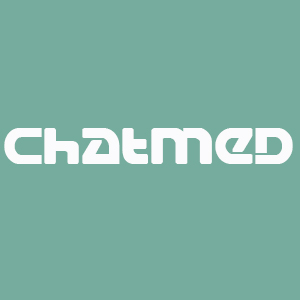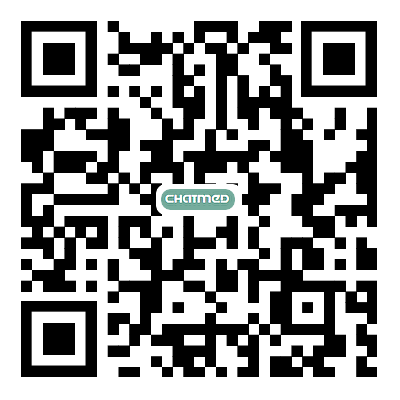REFERENCES
1. Risk Factor Collaboration (NCD-RisC). Worldwide trends in hypertension prevalence and progress in treatment and control from 1990 to 2019: a pooled analysis of 1201 population-representative studies with 104 million participants. Lancet 2021;398:957-80.
2. Muntner P, Shimbo D, Carey RM, et al. Measurement of blood pressure in humans: a scientific statement from the American Heart Association. Hypertension 2019;73:e35-66.
3. Rabi DM, McBrien KA, Sapir-Pichhadze R, et al. Hypertension Canada’s 2020 Comprehensive Guidelines for the prevention, diagnosis, risk assessment, and treatment of hypertension in adults and children. Can J Cardiol 2020;36:596-624.
4. Williams B, Mancia G, Spiering W, et al. 2018 Practice Guidelines for the management of arterial hypertension of the European Society of Cardiology and the European Society of Hypertension: ESC/ESH Task Force for the management of arterial hypertension. J Hypertens 2018;36:2284-309.
5. Whelton PK, Carey RM, Aronow WS, et al. 2017 ACC/AHA/AAPA/ABC/ACPM/AGS/APhA/ASH/ASPC/NMA/PCNA Guideline for the prevention, detection, evaluation, and management of high blood pressure in adults: a report of the American College of Cardiology/American Heart Association Task Force on Clinical Practice Guidelines. Hypertension 2018;71:e13-e115.
6. Muntner P, Einhorn PT, Cushman WC, et al. 2017 National Heart. Blood pressure assessment in adults in clinical practice and clinic-based research: JACC Scientific Expert Panel. J Am Coll Cardiol 2019;73:317-35.
7. Townsend RR. Out-of-office blood pressure monitoring: a comparison of ambulatory blood pressure monitoring and home (Self) monitoring of blood pressure. Hypertension 2020;76:1667-73.
8. Hansen TW, Li Y, Boggia J, Thijs L, Richart T, Staessen JA. Predictive role of the nighttime blood pressure. Hypertension 2011;57:3-10.
9. Hermida RC, Crespo JJ, Domínguez-Sardiña M, et al. Hygia Project Investigators. Bedtime hypertension treatment improves cardiovascular risk reduction: the Hygia Chronotherapy Trial. Eur Heart J 2020;41:4565-76.
10. Hermida RC, Ayala DE, Mojón A, Fernández JR. Influence of circadian time of hypertension treatment on cardiovascular risk: results of the MAPEC study. Chronobiol Int 2010;27:1629-51.
11. Cloutier L, Daskalopoulou SS, Padwal RS, et al. A new algorithm for the diagnosis of hypertension in Canada. Can J Cardiol 2015;31:620-30.
12. Tocci G, Presta V, Figliuzzi I, et al. Prevalence and clinical outcomes of white-coat and masked hypertension: analysis of a large ambulatory blood pressure database. J Clin Hypertens (Greenwich) 2018;20:297-305.
13. Sivén SS, Niiranen TJ, Kantola IM, Jula AM. White-coat and masked hypertension as risk factors for progression to sustained hypertension: the Finn-Home study. J Hypertens 2016;34:54-60.
14. Bobrie G, Chatellier G, Genes N, et al. Cardiovascular prognosis of “masked hypertension” detected by blood pressure self-measurement in elderly treated hypertensive patients. JAMA 2004;291:1342-9.
15. Brueren MM, Petri H, van Weel C, van Ree JW. How many measurements are necessary in diagnosing mild to moderate hypertension? Fam Pract 1997;14:130-5.
16. Desai R, Park H, Dietrich EA, Smith SM. Trends in ambulatory blood pressure monitoring use for confirmation or monitoring of hypertension and resistant hypertension among the commercially insured in the U.S., 2008-2017. Int J Cardiol Hypertens 2020;6:100033.
17. Shimbo D, Kent ST, Diaz KM, et al. The use of ambulatory blood pressure monitoring among Medicare beneficiaries in 2007-2010. J Am Soc Hypertens 2014;8:891-7.
19. Kent ST, Shimbo D, Huang L, et al. Rates, amounts, and determinants of ambulatory blood pressure monitoring claim reimbursements among Medicare beneficiaries. J Am Soc Hypertens 2014;8:898-908.
20. Dietrich E, Desai R, Garg M, Park H, Smith SM. Reimbursement of ambulatory blood pressure monitoring in the US commercial insurance marketplace. J Clin Hypertens (Greenwich) 2020;22:6-15.
21. Kronish IM, Kent S, Moise N, et al. Barriers to conducting ambulatory and home blood pressure monitoring during hypertension screening in the United States. J Am Soc Hypertens 2017;11:573-80.
22. Booth JN 3rd, Muntner P, Abdalla M, et al. Differences in night-time and daytime ambulatory blood pressure when diurnal periods are defined by self-report, fixed-times, and actigraphy: improving the Detection of Hypertension study. J Hypertens 2016;34:235-43.
23. Verdecchia P, Angeli F, Borgioni C, et al. Prognostic value of circadian blood pressure changes in relation to differing measures of day and night. J Am Soc Hypertens 2008;2:88-96.
24. Parati G, Stergiou G, O’Brien E, et al. European Society of Hypertension Working Group on Blood Pressure Monitoring and Cardiovascular Variability. European Society of Hypertension practice guidelines for ambulatory blood pressure monitoring. J Hypertens 2014;32:1359-66.
25. International Organization for Standardization. ISO 81060-2:2020/AMD 1:2020. Non-invasive sphygmomanometers - Part 2: Clinical investigation of intermittent automated measurement type. Amendment 1. Available from: https://www.iso.org/standard/75432.html [Last accessed on 2 Mar 2022].
26. A&D Medical. Ambulatory blood pressure monitoring redefined. Available from: https://medical.andonline.com/HeartTrackABPM [Last accessed on 2 Mar 2022].
27. mmHg Inc. Cloud-based ambulatory blood pressure monitoring. Available from: https://mmhg.ca/products/cloud-based-ambulatory-blood-pressure-monitoring/ [Last accessed on 2 Mar 2022].
28. Omboni S, Caserini M, Coronetti C. Telemedicine and M-health in hypertension management: technologies, applications and clinical evidence. High Blood Press Cardiovasc Prev 2016;23:187-96.





